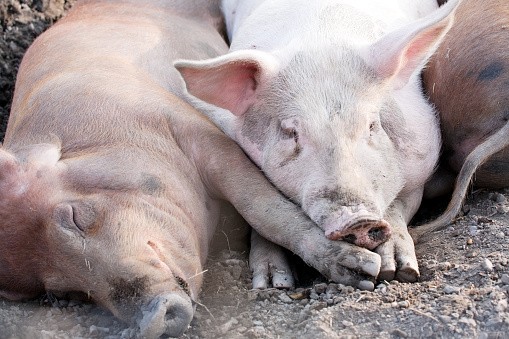
African swine fever disease is an infectious disease of domestic and wild pigs that causes a mortality rate as high as 100 per cent.
The virus affects animals of all breeds and ages and is caused by a virus that causes high fever and bleeding with infected animals dying within two to 10 days.
The disease is transmitted through contaminated blood, tissues, secretions and excretions of sick and dead animals. Direct transmission occurs when a healthy animals comes into contact with a sick one.
Indirect transmission of the diseases happens when feeding with garbage containing infected meat, biological factors such as ticks and farm implements such as clothes.
Signs and symptoms of the disease include fever (40.5 to 45 degrees Celsius), reddening o the skin in white pigs, tips of ears, tail and lower aspects of chest and abdomen.
Related
Kakamega farmer earns big from pig rearing after abandoning cane and maize farming
Farmer earns Sh100,000 a month from selling pig, cow and chicken feeds
Farmer applies pigs’ manure in celery farming to keep off moles off
There can be darkening of skin and incoordination within 24 to 48 hours before death.
Animals’ exhibit increased pulse and respiratory rate, vomiting, diarrhea (sometimes bloody) and eyes discharge may exist.
In pregnant sows (female pigs), abortion may occur with survivors acting as virus carriers for life.
In chronic form various signs such as weight loss, ulcers and swellings of joints.
According to the Kenya government animal disease act cap 364, farmers are advised to bever allow visitors into the piggeries, avoid feeding pigs with leftovers from eating houses and never allow pigs to roam.
The piggeries can be maintained by disinfecting with magadi soda by erecting footpaths filled with a solution of magadi soda at all entries to pig dens.
The disease may result in carriers and hence farmers are advised to slaughter and bury all affected pigs.
According to the 2018 Economic Survey Report, the number of pigs slaughtered increased for the third consecutive year, to 360,100 in 2017 up from 313,600 in 2016.
Pigs are reared for their meat (pork), their skin is used to make leather and their hairs (fur) used to make brushes.